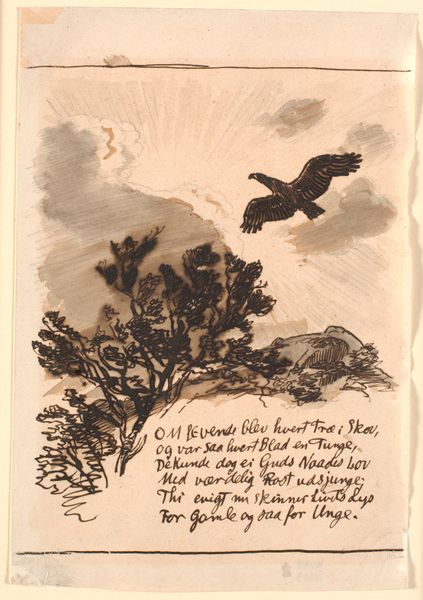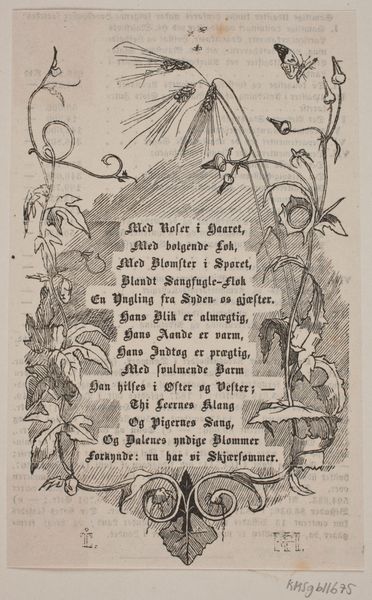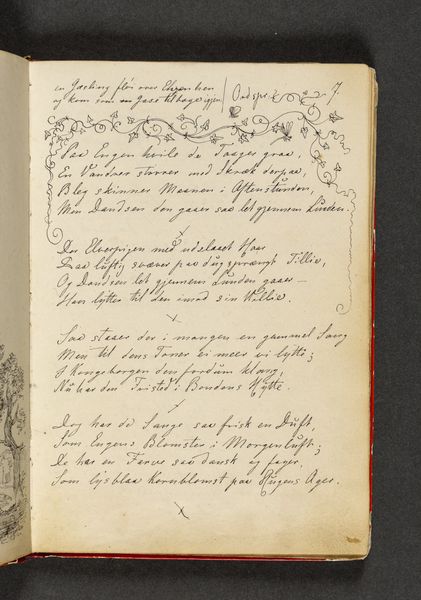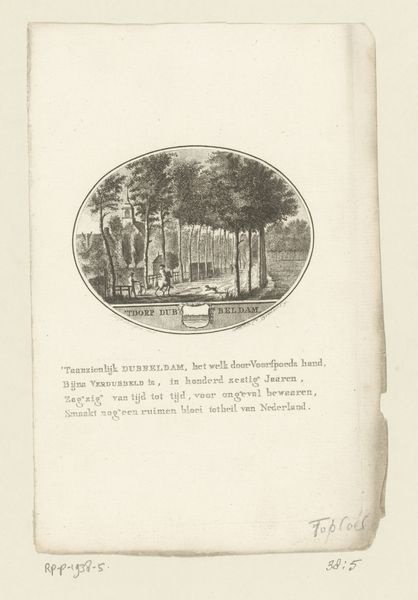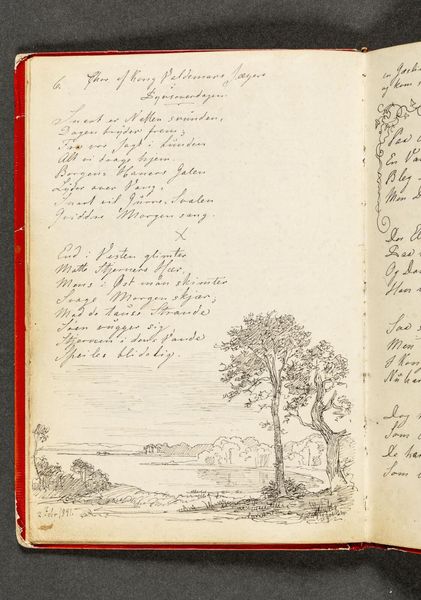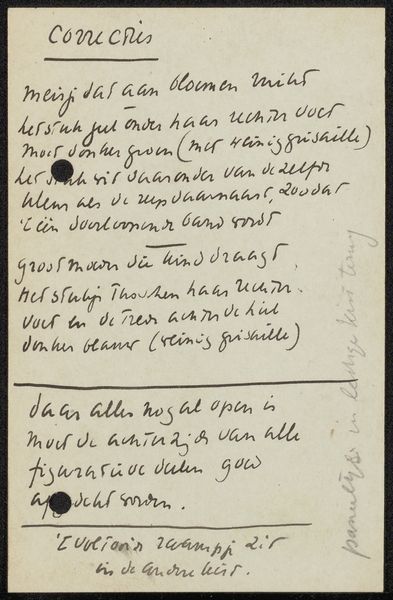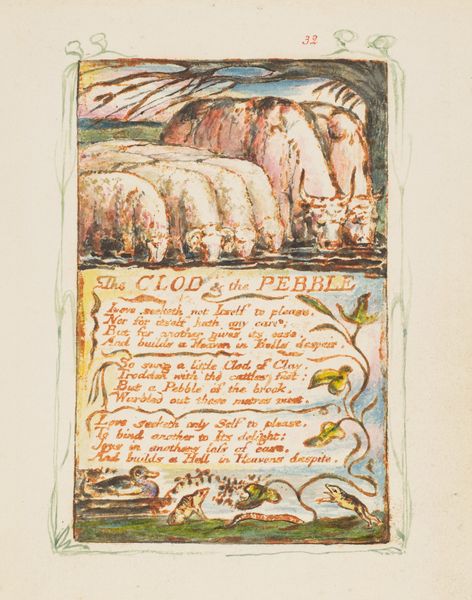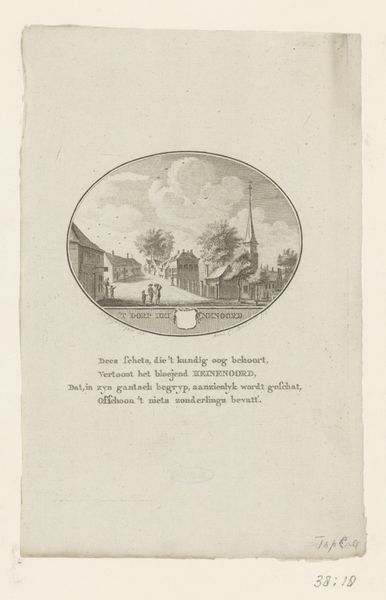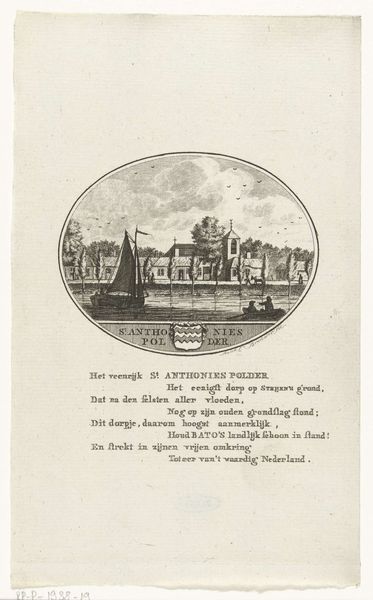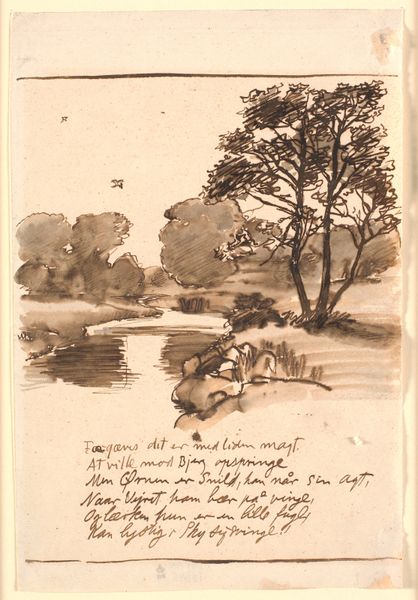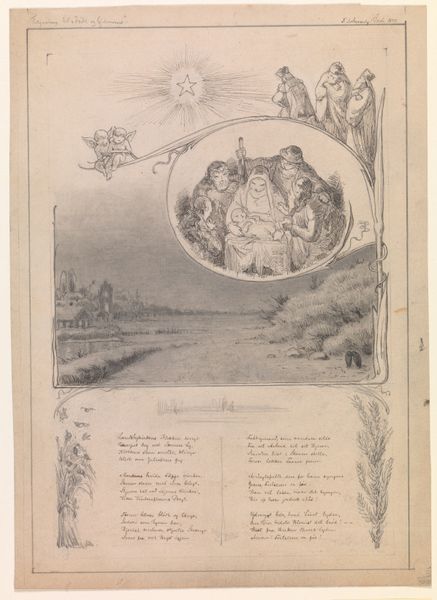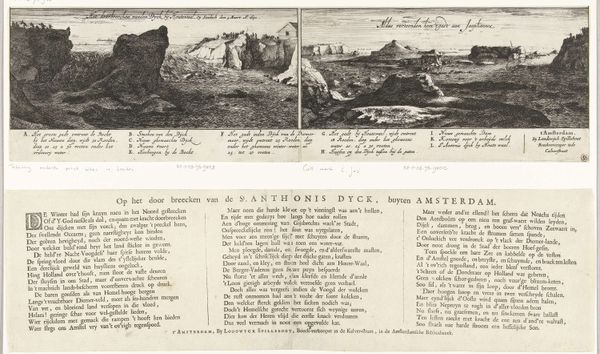
Dimensions: 200 mm (height) x 138 mm (width) (bladmaal)
Editor: So, this is "Udkast til aftenlandskab," or "Sketch for an Evening Landscape," made by Joakim Skovgaard in 1885. It's done with ink and tempera on paper, it seems. There's a serene quality to it, despite the limited color palette, almost melancholic. How do you interpret this work? Curator: Given the date and Skovgaard's interest in Romanticism, this work engages with ideas around national identity. The landscape tradition in 19th century Europe often served to define and celebrate a nation’s unique character, no? What role do you think depictions of landscape played in constructing Danish identity at this time? Editor: I guess the subdued tones create a somber feeling... a sense of enduring hardship? Like the landscape mirrors the nation's spirit? Curator: Precisely! Skovgaard strategically utilizes light and shadow. Note how the strong horizon line separates the shadowed land from the radiant sky, a kind of visual metaphor. This romantic era really saw landscape painting being less about geography, and more about the spiritual connection between the people and the land itself. Did he exhibit this? What might he be suggesting about the “national character?” Editor: It makes you wonder what kind of character the text relates to in that case? I'm sure I would be interested if I could understand the text that goes with it. Curator: Exactly! Text inclusion hints at cultural institutions being entwined into the artist's romantic and nationalist ambitions. You can imagine this on view within such a socio-cultural atmosphere, in order to instill or revive some kind of spirit among people. Editor: Wow, that’s a great insight! Now I'm looking at it completely differently, knowing about the sociopolitical undertones and how that contrasts with my original impression. Curator: Indeed, viewing art through a historical lens transforms our personal impressions into a much broader understanding of the work's purpose within its society.
Comments
No comments
Be the first to comment and join the conversation on the ultimate creative platform.

